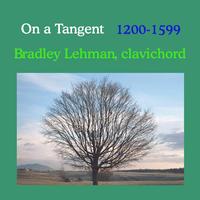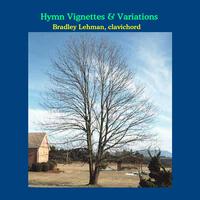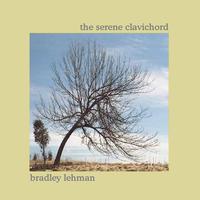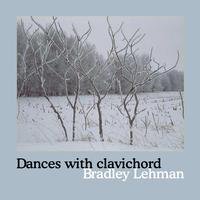Each of these CD's has its own page of notes:





On a Tangent, 1200-1599
On a Cotangent, 1600-1999
Hymn Vignettes and Variations
The Serene Clavichord
Dances with Clavichord





On a Tangent, 1200-1599
On a Cotangent, 1600-1999
Hymn Vignettes and Variations
The Serene Clavichord
Dances with Clavichord
| Track | Composer | Title | Timing |
| 1 | Peter Philips | Galliardo | 0'50" |
| 2 | Conrad Paumann | Mit ganczem Willen | 1'20" |
| 3 | Conrad Paumann | Elend, du hast umfangen mich | 1'44" |
| 4 | Anonymous | Holloyne pardye | 0'41" |
| 5-14 | Bela Bartok | For Children II (Slovak Melodies): 5, 12, 13, 24, 2, 3, 14, 6, 7, 18 |
9'00" |
| 15 | J S Bach | Minuets in G/g | 3'03" |
| 16 | C P E Bach | Polonaises (3) in g/G/g | 4'15" |
| 17 | Melchior Neusidler | Wie möcht ich frölich werden | 1'43" |
| 18 | Pierre Attaingnant | Basse dance 7 | 1'10" |
| 19 | Mr Newman (Mulliner Book) | A pavyon | 1'53" |
| 20 | Thomas Tallis | A point | 0'38" |
| 21 | Orlando Gibbons/Lehman | SONG 13 ("Hymnes and Songs of the Church") | 2'02" |
| 22 | Johann Pachelbel | Wenn wir in höchsten Nöten sein | 2'09" |
| 23-25 | J S Bach, Pachelbel, Samuel Scheidt | O Haupt voll Blut und Wunden | 4'33" |
| 26 | Susanne van Soldt | Alman de la nonette | 0'55" |
| 27 | Luys Narvaez | Guardame las vacas | 1'44" |
| 28 | Luys Milan | Ricercar (Fantasia) 3: G | 2'03" |
| 29 | Alonso Mudarra | Fantasia X (que contrahaze la harpa en la maniera de Ludovico) |
2'06" |
| 30 | Luys Milan | Fantasia (Ricercar) 67: F | 2'03" |
| 31 | Luys Narvaez | Cancion del emperador (Josquin's "Mille regretz") | 2'13" |
| 32 | Georg Böhm | Wer nur den lieben Gott - partita | 7'00" |
| 33 | Johann Gottfried Walther | Jesu, meine Freude - 4 var | 6'30" |
| 34 | Selena O'Neill (Irish trad)/Lehman | The foggy morn | 2'25" |
| 35 | Catalan trad/Lehman | Song of the birds (Cant dels ocells) | 1'45" |
| 36 | Joe Pass | Sultry | 6'30" |
| 37 | trad/Lehman | Dona nobis pacem | 2'58" |
| Total time with pauses: | 73'30" |
A preliminary version of this project is available as the two discs On a Tangent and On a Cotangent at mp3.com. Those two discs include the public domain music only; they do not include any of the pieces which might need copyright clearance (Bela Bartok, Joe Pass). When The Domesticated Clavichord is published as a conventional release, those preliminary mp3.com versions will likely be discontinued.
Galliardo - A dance by Peter Philips appearing in the Fitzwilliam Virginal Book. Although it is quite short, its cross-rhythms are especially elaborate. [Complete version @mp3.com]
Elend, du hast umfangen mich - This rhythmically complex piece and Mit ganczem Willen are two examples of the mid-15th century organ style of Conrad Paumann (c1410-1473). Mit ganczem Willen appears to be an elaboration of a three-part vocal model which eventually mutates into a two-part keyboard texture. [Complete version @mp3.com]
Holloyne pardye - Anonymous, 16th century, some rough-and-ready Halloween party music.
For Children, II: Slovak Melodies - Bela Bartok's transparent settings of popular Slovak folksongs are extremely well crafted. I have assembled a suite of ten pieces from the collection: #5 (The peacock flew), #12 (Mother of my lover), #13 (Anicka Mlynarova), #24 (I passed through the forest), #2 (Kite settled on the branch), #3 (Above the tree, under the tree), #14 (Plowing are six oxen), #6 (There is an old witch), #7 (Rogue's song/When I came from the war), and #18 (Jeering song/Once I was your lover). Bartok suggested in the preface to his Mikrokosmos that some of those pieces are well suited to the harpsichord, so I have taken his music to the clavichord as well. Bartok's lyricism and rhythmic inventiveness suit the clavichord perfectly. [Complete version of #2 and #18 @mp3.com]
Minuets in G and G Minor - A pair of pieces from J S Bach's notebook for his wife Anna Magdalena, and familiar to every keyboard and violin student. [Complete version @mp3.com]
Three Polonaises (G Minor, G Major, G Minor) - Now attributed as early compositions of Carl Philipp Emanuel Bach, appearing in his stepmother's notebook. Centerpieces of the clavichord repertoire. [Complete version @mp3.com]
Wie möcht ich frölich werden - A lute dance by Melchior Neusidler, 1574: music in a popular style, with a duple dance followed by a triple dance on the same themes. [Complete version @mp3.com]
Basse Dance 7 - From the 1531 collection of dance music published by Pierre Attaingnant: the earliest surviving publication of keyboard music. This basse dance also exists in versions for ensemble ("Bergeret sans roch," published by Susato) and for lute ("La roche" and "La roque," in another Attaingnant book). [Complete version @mp3.com]
A Pavyon - A danceable pavan in C minor, credited to "Newman" in The Mulliner Book. [Complete version @mp3.com]
A Point - A short and simple imitative piece by Thomas Tallis, also from The Mulliner Book.
SONG 13 - This gentle tune by Orlando Gibbons is #13 of sixteen Gibbons tunes in George Wither's collection "Hymnes and Songs of the Church," 1623. The text in Withers' book is from the Song of Solomon: "Oh, my love! how comely now, and how beautiful art thou!..." My arrangement is for an imaginary ensemble of viols, growing from Gibbons' original version which included soprano and bass only. [Downloadable complete version, 96K/sec]
A chorale setting by Johann Pachelbel (1653-1706), originally for organ: Wenn wir in höchsten Nöten sein - The 16th century version as it appears in hymnals is presented first; then a sparkling three-part arrangement by Pachelbel, with the chorale tune played slowly in the top voice. It is natural that this core of practical organ repertoire was regularly played at home on clavichords, rather than hiring a bellows pumper for practice at the church. The clavichord also presents the texture with exceptional clarity. [Downloadable complete version, 96K/sec]
O Haupt voll Blut und Wunden - The set of variations here is composite and moves backward in time: a four-part vocal version from J. S. Bach’s Christmas Oratorio, an organ prelude by Johann Pachelbel, and an organ harmonization from Samuel Scheidt’s Görlitzer Tabulaturbuch (1650).
La Monica (Almande de la nonette) - From the 16th century onward there are over 200 surviving European versions of this particular song, "La Monica," most often about a young woman forced to become a nun against her will. The version played here is one of the most straightforward early settings, the "Almande de la nonette" from Susanne van Soldt’s virginal book. [Complete version @mp3.com] [Downloadable complete version, 96K/sec]
Guardame las vacas and Mille regretz (Cancion del emperador) - From the Seis libros del Delphin by Luys de Narvaez, 1538, originally for vihuela da mano. Guardame las vacas is a set of variations on a popular song about two young cowherds. Mille regretz (Cancion del emperador) is a setting of Josquin's wistful chanson: restrained elaborations that stay within the sorrowful character of the vocal model. [Complete versions @mp3.com]
Fantasia (Ricercar) 67 in F and Ricercar (Fantasia) 3 in G - Two imitative fantasias by Luys Milan, mid-16th century, originally for vihuela da mano. These pieces illustrate particularly well the clavichord's different sounds from octave to octave. [Complete version @mp3.com]
Fantasia X (que contrahaze la harpa en la maniera de Ludovico) - This popular piece by Alonso Mudarra is a staple of classical guitarists' repertoire, originally for vihuela but imitating the free harp improvisations of Ludovico (early 16th century). The daring harmonic clashes near the end are accompanied by a margin note from the composer: he cautions the player to play them tastefully rather than worrying about the "wrong" notes.
Wer nur den lieben Gott lässt walten - The dramatic set of seven variations by Georg Böhm (1661-1733) is typical of this passionate North German composer. His dynamic keyboard textures and techniques are particularly well suited to the clavichord, although his music is also effective on the harpsichord or organ.
Jesu, meine Freude - A selection of variations on this melancholy chorale: versions 1, 2, 6, and 7 from a set of ten by Johann Gottfried Walther (1684-1748). Like the chorale partitas of his cousin J S Bach, Walther's variation sets are practical collections of options for the organist, and most of the variations without pedals work fine on any keyboard instrument.
The Foggy Morn - This traditional Irish folk tune is found in the 1915 collection O'Neill's Irish Music, arranged for keyboard by Selena O'Neill. I play the O'Neill version followed by my own elaboration. [Complete version @mp3.com]
Song of the Birds (Cant dels ocells) - This Christmas folk tune from Catalonia is the piece with which Pablo Casals regularly ended his solo recitals; it eventually became an unofficial national anthem through his advocacy. It appears in the 16th century Medinaceli Songbook. I have written a very simple arrangement in an improvisatory guitar style. [Complete version @mp3.com]
Sultry - Jazz guitarist Joe Pass improvised this piece in 1977 as part of his Virtuoso #3 solo album. Most of the Virtuoso #3 music transfers wonderfully to the clavichord without alteration of any notes, and this piece is no exception. However, I have chosen to play Sultry considerably more slowly to explore an especially "laid-back" and gentle mood. Pass himself was familiar with the clavichord from his work with Oscar Peterson. [Complete version @mp3.com]
Dona nobis pacem - This traditional round is a plea for peace, mesmerizing in its repetitions. The arrangement is inspired partly by the ringing sound of hammered dulcimers. After all three voices have gone through the round, an upside-down version of the theme gradually replaces it. The original theme is present only in the imagination until it returns near the end.
There is also enough music recorded in this project to produce a two-volume set with about 60 minutes per CD. In that event, the following selections are also available, and everything would be resequenced with the above music into two balanced programs.
| Anonymous | En avois | 0'54" | |
| Anonymous | Quando claro | 2'09" | |
| Anonymous | Estampie | 3'29" | |
| Banchieri | Suonata prima | 1'03" | |
| Debussy | Le petit negre | 1'50" | |
| Gaultier | Tombeau de Mlle Gaultier | 3'22" | |
| Irish folk/BPL | The piper o'er the meadows straying | 1'15" | |
| Legrand/Evans | You must believe in spring | 2'50" | |
| Lehman | Wunderbarer König | 2'18" | |
| Lehman | Ein feste Burg | 3'17" | |
| Lehman/Buxheim | Christ ist erstanden | 3'01" | |
| Pachelbel | Warum betrübst du dich, mein Herz | 2'42" | |
| Philips | Amarilli mia bella | 2'53" | |
| Sancta Maria | Fantasia | 1'17" | |
| Schoenberg | Piano piece Op 19 #2 | 0'59" | |
| Schwartz | A rainy night in Rio | 2'18" | |
| trad Japanese/Lehman | SAKURA canons | 2'25" | |
| Victoria | O vos omnes | 3'02" |
(The alternate selections below are not yet in playing sequence, so they are listed alphabetically by composer.)
Christ ist erstanden - I play this 12th century plainchant tune first in parallel as organum, then a new two-part setting in improvisatory 14th century keyboard style, followed by a triple-time version from the Buxheim organ book (c1470).
Estampie - This anonymous dance setting from c1325 (Robertsbridge Codex) is the earliest extant keyboard composition. It is well suited to the clavichord, the simplest keyboard instrument. I play the short version which appears in the Historical Anthology of Music compiled by Archibald Davison and Willi Apel; a longer version in modern edition is available in the Corpus of Early Keyboard Music edited by Apel. [Complete version @mp3.com]
En avois - Anonymous, 15th century, a gentle and haunting two-voiced piece in triple time. (For further details check the Corpus of Early Keyboard Music edited by Apel.) [Complete version @mp3.com]
Quando claro - One of the classic bass formulas for improvising dance music. This is an anonymous 16th century example. [Complete version @mp3.com]
Suonata prima - A short imitative piece in progressively quicker note values. Adriano Banchieri is better known for his ensemble music than his keyboard music.
Le petit negre - Claude Debussy's 1909 imitation of American popular music (cakewalks and Scott Joplin). [Complete version @mp3.com]
Tombeau de Mademoiselle Gaultier - From the lute collection Le Rhetorique des Dieux by Denis Gaultier (c1600-1672). This poignant and melancholy funeral piece commemorating Gaultier's wife is in the rare key of F-sharp minor. [Complete version @mp3.com]
You Must Believe In Spring - This wistful Michel Legrand tune is the title piece for one of the last and most intimate Bill Evans albums. I have constructed a shortened solo version, keeping Evans' introduction and coda but omitting the intervening bass and piano solos. [Complete version @mp3.com]
Ein feste Burg ist unser Gott - Martin Luther found this tune being sung lustily in a pub, and adapted it for his own use in church. My increasingly greasy arrangement heard here is an attempt to catch some of the original pub atmosphere and good fun in the rhythm. Part of it is also inspired by William Byrd's battle piece from My Ladye Nevells Booke.
Two chorale settings by Johann Pachelbel (1653-1706), originally for organ: Wenn wir in höchsten Nöten sein - The 16th century version as it appears in hymnals is presented first; then a sparkling three-part arrangement by Pachelbel, with the chorale tune played slowly in the top voice. Warum betrübst du dich, mein Herz - This popular martyrs’ hymn of the 16th century became a staple German chorale for at least the next 200 years, with the tune rearranged in every generation. Pachelbel set it as a chromatic fugue. It is natural that this core of practical organ repertoire was regularly played at home on clavichords, rather than hiring a bellows pumper for practice at the church. The clavichord also presents the texture with exceptional clarity. [Downloadable complete version of "Wenn wir", 96K/sec]
Amarilli mia bella - An extremely popular 17th century song by Giulio Caccini, establishing a new style of singing and rearranged by composers everywhere soon after its publication. This version by Peter Philips is in the Fitzwilliam Virginal Book. This is the jazz of the early 17th century: a freely expressive keyboard arrangement of a vocal composition. My performance is inspired by the instructions of Girolamo Frescobaldi (a contemporary of Caccini and Philips), noting that his keyboard toccatas should be played like the singing of a madrigal: "Taking the beat sometimes slowly, sometimes fast, and even pausing, according to the mood or the meaning of the words." [Complete version @mp3.com]
Fantasia - A short example from Tomas de Sancta Maria's treatise on improvising contrapuntal keyboard fantasias.
Piano Piece, Op. 19 #2 - This tiny piece from Schoenberg's Op. 19 is mostly silence: staccato thirds interacting with melodic fragments. Its particularly sparse texture matches the clavichord's delicacy.
A Rainy Night in Rio - This lively little tune by Arthur Schwartz is probably familiar to anyone who has watched Bugs Bunny cartoons. In "Long-Haired Hare" Bugs sings this song with his banjo, tormenting his neighbor (Giovanni Jones). The song is originally from the other side of the Warner Brothers studio lot: the 1946 film "The Time, the Place, and the Girl." [Complete version @mp3.com]
The Foggy Morn and The Piper O'er the Meadows Straying - Both these traditional Irish folk tunes are found in the 1915 collection O'Neill's Irish Music, arranged for keyboard by Selena O'Neill. I found this wonderful old book in a small bookstore in Limerick. In each case I play the O'Neill version followed by my own elaboration. [Complete version of "The Foggy Morn" @mp3.com]
SAKURA Canons - This Japanese folk tune is usually found with a text about cherry blossoms. My arrangement is inspired by the sound of a koto ensemble. The tune is played simply by a single voice, then as a two-voiced canon. Then a more complex canon follows: three voices at two speeds and in two keys. This typically 15th-century compositional treatment brings exotic musical clashes.
O vos omnes - This is based on a choral responsory by Tomas Luis de Victoria (1548-1611). I have arranged it as a keyboard piece after the intabulation styles of Cabezon and his followers. This elaboration of vocal models was a common practice either for use with choirs, or for enjoyment at home. The added decorations intensify the expressivity of the phrases and help to prolong notes which fade quickly on non-sustaining instruments.
A preliminary version of this project is available as the four discs On a Tangent and On a Cotangent, The Serene Clavichord, and Dances with Clavichord. They are available at mp3.com. Those discs include the public domain music only; they do not include any of the pieces which might need copyright clearance (Bela Bartok, Joe Pass). When The Domesticated Clavichord is published as a conventional release, those preliminary mp3.com versions might be discontinued.
 See also the related CD "Hymn Vignettes and Variations for Clavichord"
which shares some material with this one.
See also the related CD "Hymn Vignettes and Variations for Clavichord"
which shares some material with this one.
Several other pages at mp3.com are also set up to demonstrate some of this music:
The Domesticated Clavichord (my "artist page")
and the "radio stations":
The examples linked here appear on the web for use in promoting publication. They are all in .mp3 format at 64K/sec sampling, 27 seconds long each, 214Kb each. They should be played at a low volume level, as the clavichord is a very quiet instrument.
None of these recordings are yet published; I am seeking a label and distributor.
The original recording (DAT/CD) was done with professional audio equipment in July 1999: industry standard fully digital quality.
The examples are all from a draft edit compiled between July 1999 and January 2000. I am the performer and producer of this material, and as such hold the copyright to this music. Almost all these compositions (unless arranged by me) are in public domain. There is still opportunity for further minor editing within these tracks.
Please see the main page for further information about this project. Some of these selections are also available as complete samples at my mp3.com page.
(Note: if you have repeated trouble downloading samples from the server, please notify me; the server seems to be sometimes unreliable. I can send e-mail copies of desired selections.)